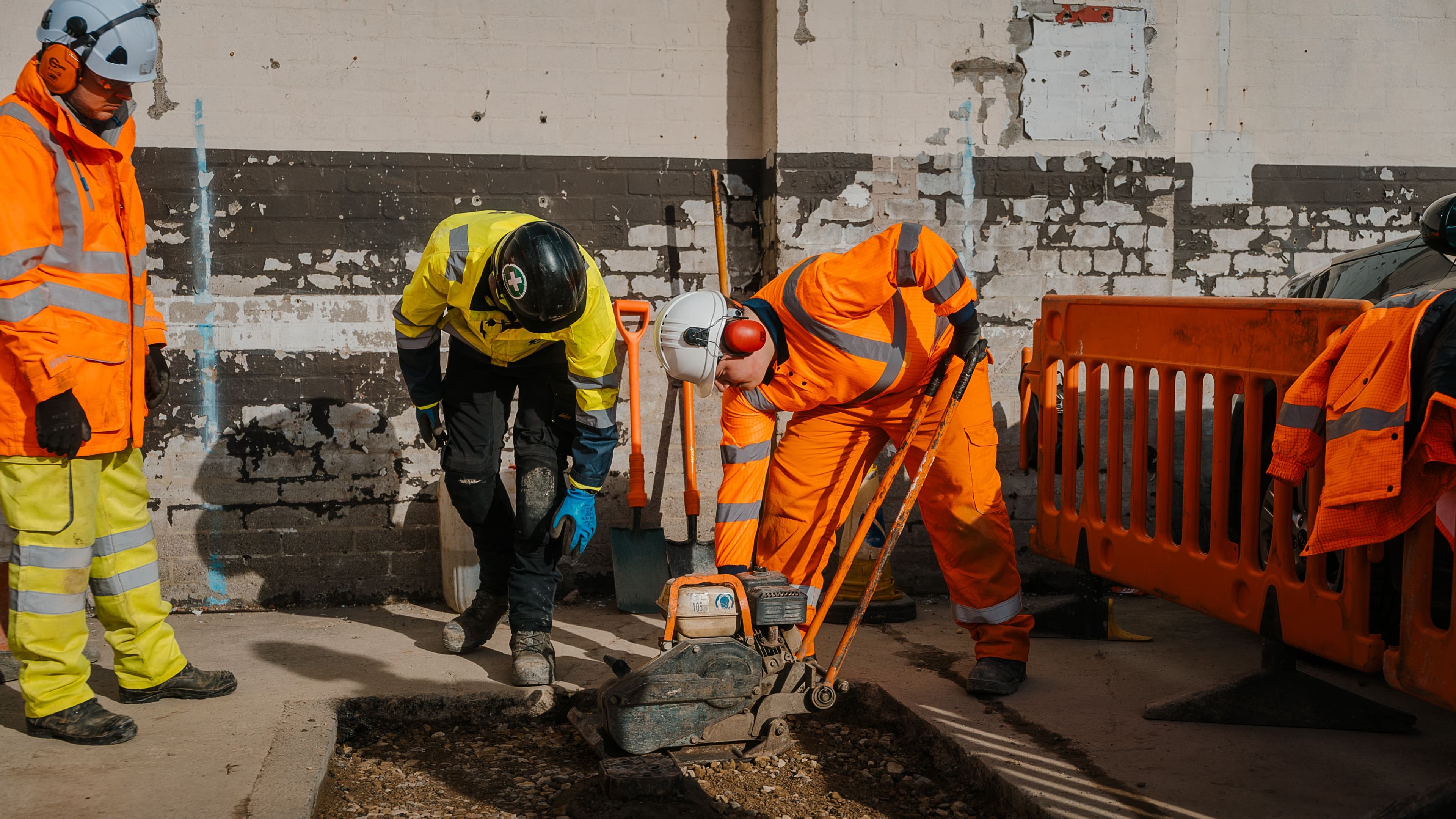Learning Objectives
1. Preparing the Pavement Layer for Hot-Lay Surfacing
- Use suitable equipment to remove interim reinstatement material to the correct depth.
- Clear loose and unacceptable materials from the reinstatement area.
- Identify and rectify surface contamination or defects in the pavement layer.
- Trim back damaged edges using appropriate equipment.
- Reposition displaced ironwork, kerbs, and edge restraints to established levels.
- Verify that the correct depth is left for the hot-lay surfacing material, as per specifications.
2. Understanding Pavement Preparation for Hot-Lay Surfacing
- Describe the equipment used for removing interim reinstatement material.
- Explain how to check depth accuracy after removing interim material.
- Justify the removal of loose and unacceptable materials before reinstatement.
- Describe the methods for clearing contamination or defects from the pavement layer.
- Explain the consequences of incorrect pavement layer construction.
3. Constructing the Bituminous Binder Course
- Confirm the delivery temperature of hot-lay bituminous material.
- Select and ensure compaction equipment is suitable, operational, and safe.
- Maintain specialist tools at the correct temperature for working with bituminous material.
- Seal edges before applying the binder course, as per specifications.
- Correctly spread, level, handle, and store hot-lay bituminous material.
- Compact the binder course following industry specifications.
4. Understanding the Construction of Bituminous Base and Binder Course
- Describe the quality requirements for selected materials.
- Explain the importance of using hot-lay materials at the correct temperature.
- Explain why tools must be maintained at proper temperatures.
- Describe the process for spreading and leveling bituminous material.
- Explain compaction procedures for achieving the required density and finish.
5. Constructing the Asphalt Surface Course
- Apply tack coat where necessary.
- Verify the temperature of the hot bituminous material before laying.
- Maintain specialist tools at the correct temperature for handling bituminous material.
- Spread, level, and compact the surface course using appropriate equipment.
- Ensure skid resistance and texture depth in the surface course.
6. Understanding Asphalt Surface Course Construction
- Explain the correct procedures for applying tack coat.
- Describe the quality requirements for asphalt materials.
- Explain the importance of temperature control for materials and tools.
- Describe how to ensure the surface course meets skid resistance and texture depth specifications.
7. Disposing of Surplus Materials
- Identify materials unsuitable for reuse or surplus to requirements.
- Store surplus materials in safe temporary storage.
- Ensure safe loading and transportation of materials for disposal.
8. Understanding Disposal of Surplus Materials
- Explain how to identify unsuitable or surplus materials.
- Justify separate storage for reusable and non-reusable materials.
- Describe the safe loading and transportation of materials.
- Explain when surplus materials should be removed from the site.
9. Following Safe Working Practices
- Adhere to health and safety regulations related to:
- Construction work practices
- Practical reinstatement tasks
- Identify and follow relevant legislation and standards.
- Ensure the site is left clean and safe after work completion.



